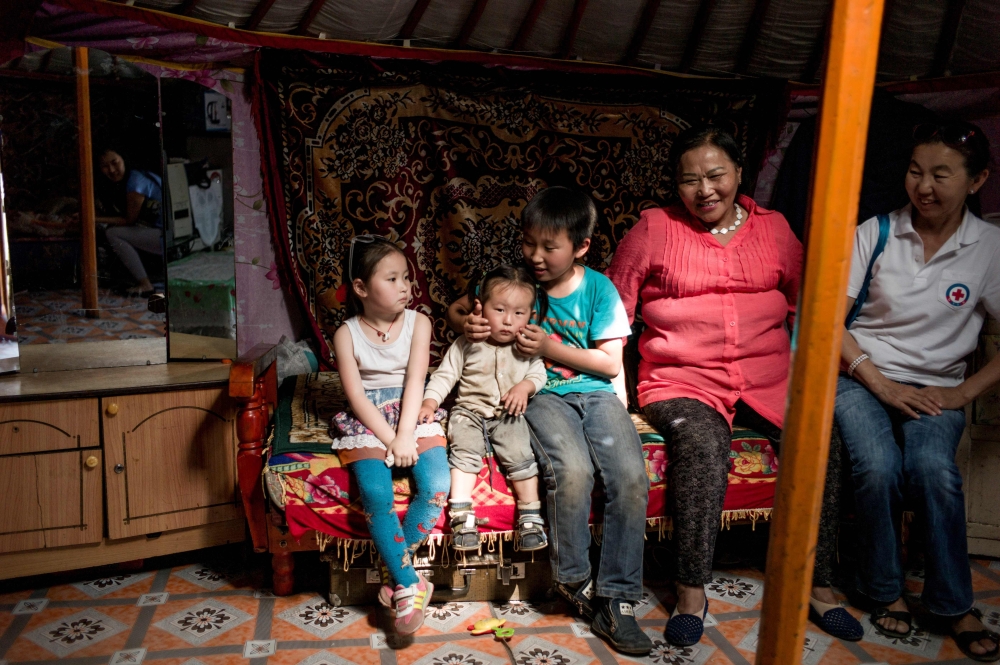
ULAN BATOR - On the steep hills encircling Mongolia's capital, skyscrapers and apartments give way to ramshackle bungalows and tattered yurts, in rickety fenced enclosures with no running water.
The "ger" districts' crowded residential clusters and smoggy grey air are a far cry from the sprawling grasslands that Jamiynsurengiin Olzod, a 35-year-old seamstress, once called home.
But like many of the suburban slum inhabitants, she gave up the traditional nomadic lifestyle of Mongolia's 900,000-strong herder population to move to Ulan Bator, harboring dreams of richer opportunities in the urban center.
"It's very hard, but life in the countryside is even harder," Olzod said as she lay in bed in the yurt she shares with her three children.
She moved in the hopes of getting an education, but Mongolia's rural-to-urban migration is also linked to the "dzud", a unique weather phenomenon characterized by long droughts and severe winters with temperatures as low as -50 degrees Celsius.
More than 40,000 livestock perished from the cold during this winter's dzud, which analysts believe is occurring with greater frequency owing to climate change.
The result is an increasingly urban society: Nearly two-thirds of the population lived in the countryside in 1960, now less than one-third does.
Around half the country's population of three million lives in the capital, with the majority residing in "ger" (Mongolian for "yurt") districts, unplanned communities linked by bumpy dirt roads, disconnected from the central electricity grid and lacking proper sewage systems.
Populist businessman Khaltmaa Battulga - who grew up in a ger district himself - promised to eradicate poverty when he was sworn in as president on Monday, inheriting a $5.5 billion International Monetary Fund-led bailout to revive the flagging economy.
The World Bank estimates that at least 60 percent of those residing in ger districts are unemployed.
The rapid growth of these settlements prompted the city's mayor to pass a decree at the start of 2017 restricting migration for a year and halting the expansion of power lines.
One meal a day
Olzod and her sister left her family's livestock with relatives in 2000.
The walls of her sparsely furnished circular tent are lined with colorful cloths offering a single layer of insulation, with a coal-burning stove at its core for Mongolia's harsh winters.
"We thought we could get an education here," Olzod said.
She and her sister worked at a sewing company but it was not enough to pay for the school tuition.
Her primary income now comes from selling hand-sewn Mongolian "deels" before the two major national holidays - the Lunar New Year in the winter, Naadam in the summer - during which the traditional robes are worn.
In the month leading up to the Lunar New Year this February, Olzod said she earned four million Mongolian tugrik ($1,700). With the monthly government cheque she received for each of her children, it was just enough to last until Naadam this week.
"All I want is a new sewing machine," said Olzod, who shares one with her sister.
The family lives on one meal a day, but at least there is one thing that gives her hope: her two teenage daughters and 10-year-old son can go to school, albeit a three-kilometer walk away.
Winter woes
Shagdur Purevsuren, a 57-year-old dairy farmer, moved to a ger district east of Ulan Bator after losing most of her livestock to the dzud 17 winters ago.
Purevsuren was using her pension to repay the loan she took out to buy three cows. She sold enough dairy products to make ends meet, but she worried about her grandchildren and unemployed daughter.
"My daughter took a lot of different jobs in the city," Purevsuren said as she stirred a steaming cauldron of orum, a thick clotted cream.
Purevsuren sighed: "Her bosses never gave her all the money she was owed... Sometimes the kids have nothing to eat. They often get colds and fevers."
Damdinsurengiin Gerelmaa, the director of an American Red Cross branch in Ulan Bator, said that herders often don't know what to expect in the capital.
"They're not informed about the risks in the city," Gerelmaa said.
Though Purevsuren initially missed rural life, she has come to embrace this in-between space where steppes and city streets converge.
It is in the ger district that she met her husband, who also used to be a herder, and her grandchildren will grow up here.
"Anyway," Purevsuren said, "I'm too old now to raise animals in the countryside." - AFP